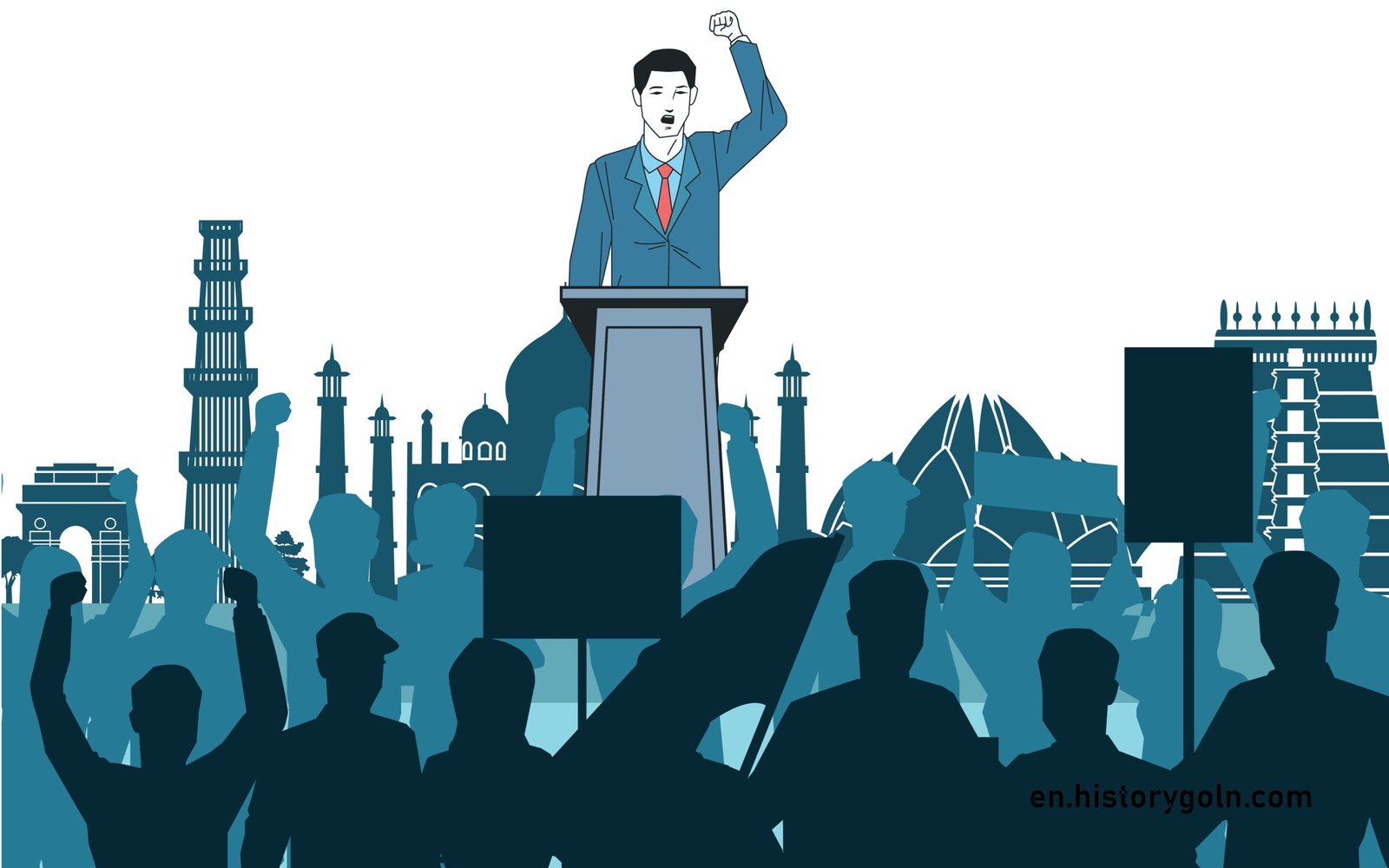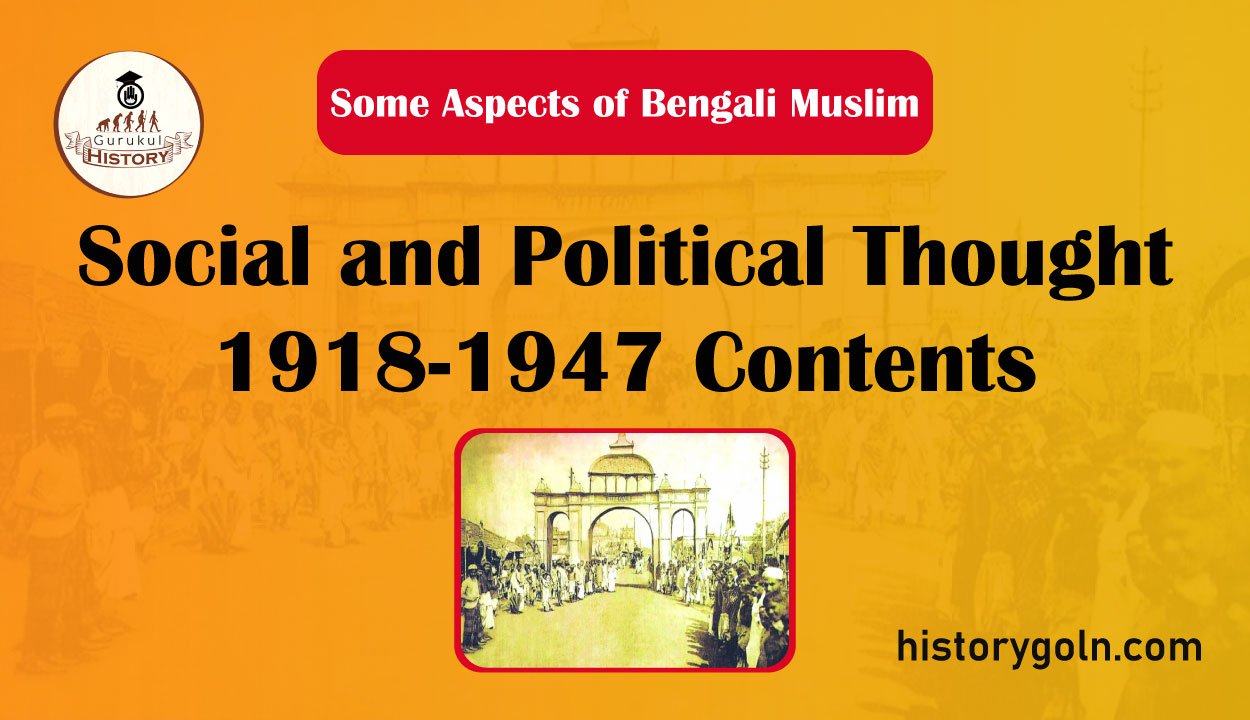Today is our topic of discussion Some Aspects of Bengali Muslim Social and Political Thought 1918-1947 Contents .
Some Aspects of Bengali-Muslim Social and Political Thought 1918-1947 Contents
This is to certify that the thesis entitled “Some-Aspects of Bengali Muslim-Social and Political Thought. 1918-1947 in the product of original research undertaken under my supervision by Mrs. Rana Razzaque Ahsan for the degree of Doctor of Philosophy of the University of Dhaka.
I further certify that this work has not previously formed the basis for the award of any other. degree, diploma, associateship, fellowship or any similar title and that it represents an independent work on the part of the candidate Mrs. Rana Razzaque Ahsan.

Chapter-1: Conservative Orthodox
- Ahl I Hadith
- Syed Ismail Hossain Shiraji
- Mohammad Moniruzzaman Islamabadi
- Maulana Mohammad Akram Khan
- Abul Mansur Ahmad
Chapter -2: Moderate Liberal

Chapter-3: Radical Humanist

Chapter -4: Analysis Of Novels
- Anowara Analysis Of Novels
- Abdullah Analysis Of Novels
- Sangsaptak Analysis Of Novels
- Padma Meghna Jamuna
- Prem Nei
Conclusion
This study is an attempt to analyse and highlight the various aspects of political and social thought of the Bengali Muslims during the first half of the twentieth century with special reference to the period 1918 to 1947.
It sought to examine the life and work of some prominent Muslim leaders who have made significant contribution to political and social development of the Bengali Muslim community. These leaders represented certain distinct trends of thought which have been broadly categorized as (a) orthodox- conservative (b) moderate-liberal and (c) radical-humanist.
Those who belonged to the orthodox-conservative trend stood for strictly following the Islamic shariah. The religious reformist movements in the earlier century had greatly moulded their thinking. They were, therefore, strongly anti-syncretic.
Anti-Hindu and anti-British attitude had led them to support the Pan-Islamist movement. They upheld the past glory of Islam and believed in maintaining Islamic heritage and culture. They advocated the use of Urdu, Arabic and Persian languages and felt proud in doing so.
The legacy of the nineteenth century Muslim thought was carried through them into the next century. But, ideas are not static and attitude of individuals change. Some of the conservative thinkers, in their later life, accepted the idea of Bengali to be the mother tongue of the Muslims of Bengal while retaining its distinct Islamic character by admixture of Arabic, Persian and Urdu words. This fomented religious exclusiveness of the Bengali Muslims.
With the emergence of a new western-educated Bengali Muslim middle class a new trend of social thought emerged. Those who represented this new trend may be termed as moderate-liberal. They were linguistically and culturally conscious of their Bengali identity. They had participated in the provincial and national politics projecting their distinct identity.
his generation of youths influenced by western liberal and democratic thought, began to assert that patriotism and national identity could not be mixed up with religion. Faith in alien language and culture was also discarded by them. The new trend set by them dealt with the particular socio-economic, political and religious aspects in Bengal.
Their attitude was non-communal. They initiated the formation of the krishak proja Party to counter the Muslim League leadership, represented mainly by the Urdu-speaking, upper- class Muslim élite. Throughout the 1930’s these moderate-liberals were actively interested in solving the problems of the Bengal peasantry.
This study also includes an analysis of a few works of Bengali literature, particularly novels. These are based on the historical, political and social background of the time, which reveal the social, political, religious and economic condition of Muslims of both rural and urban Bengal. The effect of political developments in urban Bengal had greatly influenced the rural society. The impact of the two World Wars, slump in the price of cash crops, its effect on the Bengal peasantry and its impoverishment and also agrarian disturbances have been discussed.
Communal relationship in rural Bengal was generally harmonious. Syncretic influences of indigenous culture was dominant in rural society. A significant aspect that has been discerned in the study is that most liberal and rational political and social thinkers of the time failed to disseminate their ideas among the rural Muslims. Local mullahs and maulvis however, played a significant role in shaping the mind of the rural masses.
See more:
